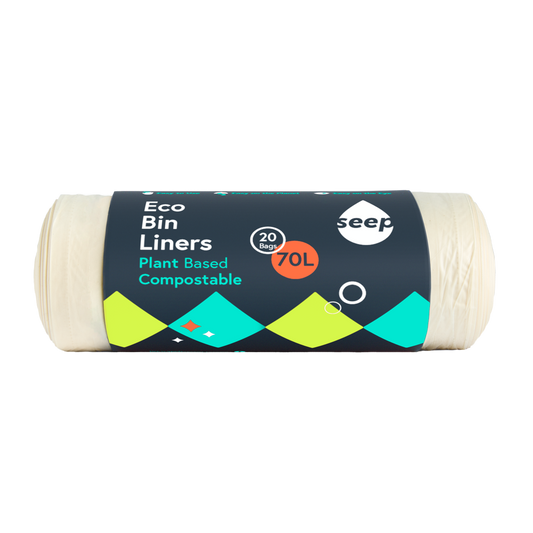
As a global society, we have to make the shift from living in a linear economy of take-make-waste to the new circular economy defined by recirculation.
It’s annoying when you want to get into the groove of a “circular economy” because it sounds sustainable but everything you read is confusing rubbish (the irony). We get it. That’s why we wanted to bring you the circular economy defined without any ridiculous jargon. Because you’re right, it does have a thing or two to do with sustainability!
At Seep, we’re already making strides to change the direction of the way cleaning products are used. And we want to help you do the same thing. From food and organic materials to technology and homewares, it can be straightforward to be circular when it comes to the use and reuse of your everyday items.
- The Current Linear Economy
To understand more about what a circular economy defined without jargon is, it’s best to first reconnect with the way we currently live.
The process of taking materials from the earth, making something and then throwing them into a landfill when they no longer meet the high standards of being instagrammable is linear. There’s simply only one direction to go. Hence, “linear economy”.
The problem is, this isn’t sustainable. There is only a finite number of resources left in the pot, to begin with. Plus, there’s a limited amount of space on our planet that can take being pumped with last season’s products.
So, the linear economy is an outdated way of living. We need to find a way to allow our planet to breathe and regenerate while we continue to access and use the existing resources in our economy.
- The Three Principles of a Circular Economy
Now you know the basics of the linear economy and why we need a sustainable alternative to using everyday products, we can get to the important part. It’s all about the circular economy defined in our everyday language.
In effect, the circular economy is a strategy that alleviates all the strains of the linear economy. Such as the limited resources, the limited space for waste and the lack of regrowth on our planet. It has three goals:
- End Waste and Pollution
Our biggest issue is our mass wastage; so, it’s our primary concern. Not only do we need to think about the 3 R’s we all learned in primary school (“Reduce, Reuse, Recycle” to jog your memory), we need to start changing the way products are produced for single-use.
- Continue the Lifespan of Products
If we change the way we perceive fast consumption such as fashion, gadgets and other everyday use items on trend, we can tackle the issue. So, it’s about finding products with long lifespans from the get-go and allowing them to live by sharing and caring.
- Allow Nature to Regrow
When we progress past sourcing new materials, our planet has the opportunity to regrow. Instead, we’ll be recirculating all of the materials that are already in use. For example, stripping a washing machine to become the next line of smartphones while the grass grows greener.
- The Basis of a Circular Economy
Buckle up, here’s the serious bit!
The Ellen Macarthur Foundation’s butterfly diagram is the circular economy defined visually. There are two “materials” that should be in a constant flow of use. First, there is organic matter; then, there is industrial matter. They’re also often referred to as biological and technical or renewables and stock.
Organic matter should be grown, harvested, manufactured, sold and consumed. But it doesn’t end there. Waste should be repurposed as biochemical feedstock for the growth of tomorrow’s harvest.
Industrial matter has a more complex lifecycle (multiple different lifecycles to be exact). It all begins with mining finite materials such as iron. Then, they enter the manufacturing process before being sold to the end user (much like the linear economy).
However, a circular economy, defined simply, has additional steps that the linear economy forgets. For one, instead of simply being used and binned, it’ll be shared with another user. This process can go on until the product needs maintenance or repair before being sent back into society to be used again.
When maintenance simply isn’t enough, it can go back up the chain for refurbishment before being loved once more. Only when it’s really in tatters will it be stripped for parts to have a new lease of life as a different product. That said, there will always be some parts such as batteries that can’t be fully recycled. And that’s when they go to a landfill. So, the circular economy system isn’t perfect but it drastically reduces the amount of waste we’re producing.
And that’s what a circular economy defined without jargon is! Plus, we have a quick tip for you; it’s about taking small steps to move away from the linear economy and make a difference. At Seep, we’ve developed cleaning products using natural ingredients so they have long lifespans and can offset their carbon footprint. Using them, you can be even closer to a circular economy in your own home
To learn more about caring for our planet while dusting the house down, have a read of our other popular articles. We’ve got “How to Make the Best Compost for Houseplants” and “Why You Should Use a Refillable Spray Bottle With Delphis Eco” ready and waiting for you.






